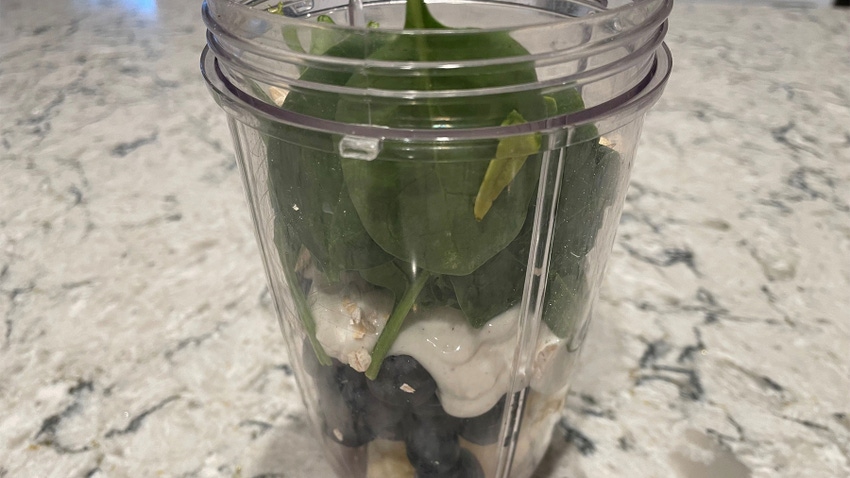February 26, 2024

Are smoothies healthy? Can they really boost your metabolism, vitamins, antioxidants and fiber as promised by magazines and articles on the internet?
Of course, the answer depends on what you put in your smoothie. But if you struggle with getting more fruits and vegetables in your diet, smoothies can help. They’re easy, fun and quick to make. Smoothies also are a great grab-and-go item for those mornings when there just isn’t enough time.
When my daughter was in high school, we struggled to have time for her breakfast, despite all the encouragement to get up a few minutes earlier. The solution was smoothies — quick and easy, and she could drink one in the car on the way to school. Fast-forward 15 years, and she’s now making smoothies for her toddler.
But how can you make a smoothie healthy and not just full of sugar? Choose a variety of ingredients, including vegetables and fiber. The most nutritious smoothies are made with whole foods: fruits, vegetables, yogurt, fiber and healthy fats. Smoothies with lots of added sugars (honey, maple syrup, sugar) aren’t as nutrient-dense and may contribute to negative health effects over time. Adding fiber from oats, chia seeds, wheat germ or flax seed can help balance sweetness and boost your daily intake of fiber.
The U.S. Dietary Guidelines recommend a daily intake of at least 38 grams of fiber for men and 25 grams for women. Most of us eat less than 16 grams of fiber each day. Some of the most fiber-rich foods to add to a smoothie are leafy greens (you really don’t taste them), spinach, oats, nuts, seeds, fruits, vegetables, whole grains and legumes. Adding cannellini beans or chickpeas (including some of the liquid in the can) can boost fiber and nutrients. Combined with pineapple or banana, which are stronger flavors, the chickpeas or white beans provide fiber and protein without any taste.
A few things to consider: A smoothie may not be as satisfying as a meal because there isn’t a lot of chewing involved. In addition, it’s easy to overconsume a smoothie because you’re drinking the calories. And some purchased smoothies may be full of added sugars, so be sure and read the label.
On the other hand, smoothies made primarily from fresh or frozen ingredients can help increase consumption of fruits and vegetables, boosting intake of vitamins, minerals, antioxidants and fiber.
Here are a couple of healthy smoothie recipes to try:
Ginger Green Smoothie
2 cups of fresh baby spinach
1 large ripe banana, sliced and frozen
1 tablespoon of fresh ginger, roughly chopped
2 tablespoons of unsweetened peanut butter
¼ of a small avocado
½ cup traditional oats
4 to 6 ounces milk
½ cup of low-fat vanilla Greek yogurt
Add all ingredients to the blender and blend until smooth. If it’s too thick, add more milk.
Tropical Berry Beet Smoothie
1 cup frozen mixed berries
½ cup frozen pineapple or frozen banana
¼ cup raw beets, roughly chopped or grated
2 tablespoons hemp hearts or flaxseed or oats
½ cup low-fat plain Greek yogurt
½ cup raw spinach leaves
4 to 6 ounces milk or orange juice
Squeeze of fresh lime juice
Add all ingredients to your blender and blend until smooth.
About the Author(s)
You May Also Like






